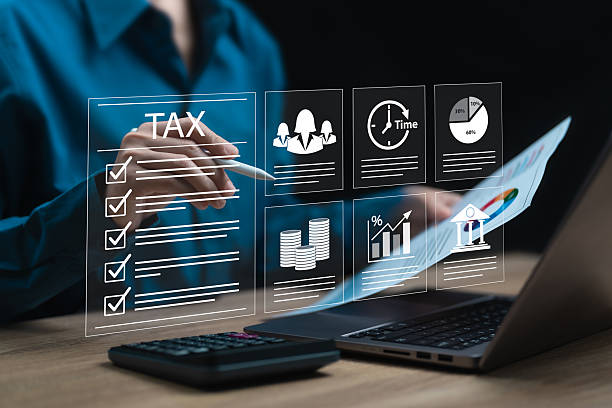What is On-Page SEO and Why is it Important?
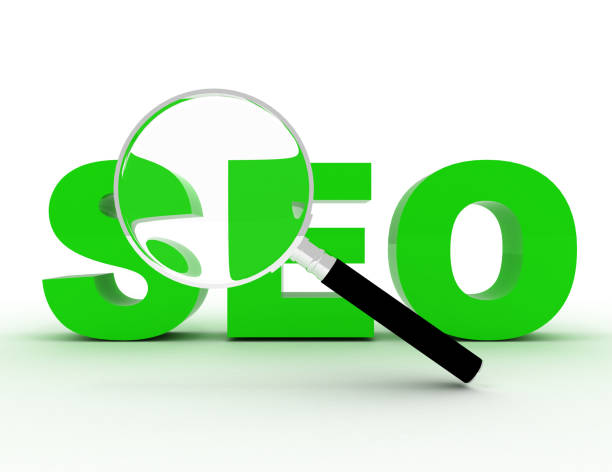
On-Page SEO refers to the set of actions taken within a website to improve its ranking in Google and other search engine results.
These actions include optimizing content, site structure, HTML tags, and other factors related to the site’s code and content.
The importance of On-Page SEO lies in helping search engines better understand the site’s content and present it to relevant users.
In fact, On-Page SEO is the foundation and basis of a successful SEO strategy.
Without strong On-Page SEO, your efforts for link building and content marketing will not be effective enough.
On-Page SEO plays a crucial role in attracting organic traffic and increasing conversion rates by improving user experience and enhancing content relevance to user search queries.
By utilizing On-Page SEO, you can optimize your website for target keywords and achieve better rankings in search results.
Did you know 85% of customers check your company’s website before any interaction?
With Rasavob, build a corporate website that truly reflects your credibility.
✅ Increase credibility and customer trust
✅ Attract high-quality leads
⚡ Get a free website design consultation
Keyword Research: Finding the Best Opportunities

#Keyword_Research is one of the most important steps in On-Page SEO.
This process involves identifying the words users employ to search for information related to your business.
Several tools are available for this purpose, such as Ahrefs Keywords Explorer, Moz Keyword Explorer, Ubersuggest, and Google Keyword Planner.
When choosing keywords, pay attention to search volume, competition level, and the keyword’s relevance to the site’s content.
Divide keywords into two main categories: Head Keywords and Long-Tail Keywords.
Head keywords usually have higher search volume but also more competition.
Long-tail keywords are longer phrases that have lower search volume but are more targeted and have higher conversion rates.
After identifying keywords, use them naturally and relevantly in your site’s content.
Avoid excessive use of keywords (Keyword Stuffing), as this can lead to penalties from Google.
The main focus should be on providing valuable and useful content for users, ensuring keywords are naturally incorporated.
Optimizing Titles and Meta Descriptions

Title Tags and Meta Descriptions are important elements in On-Page SEO that appear in search results.
The page title is the main title displayed in the browser tab and on the search engine results page (SERP).
The meta description is a summary of the page content that appears below the title on the search results page.
Titles should be engaging, relevant, and contain the page’s main keyword.
Titles should not exceed 60 characters, otherwise, they will be truncated in search results.
Meta descriptions should also be engaging, concise, and contain the main keyword and a Call to Action.
Meta descriptions should not exceed 160 characters.
The goal of optimizing titles and meta descriptions is to attract users to click on your site’s link in search results.
Proper use of keywords and providing accurate and engaging information can increase your site’s click-through rate (CTR) and consequently improve its ranking.
Furthermore, avoid duplicate titles and meta descriptions across different pages of your site.
| Element | Importance in On-Page SEO | Best Practice |
|---|---|---|
| Title Tag | Very Important | Contains keyword, engaging, less than 60 characters |
| Meta Description | Important | Engaging summary, contains keyword, less than 160 characters |
Optimizing Content for Search Engines and Users
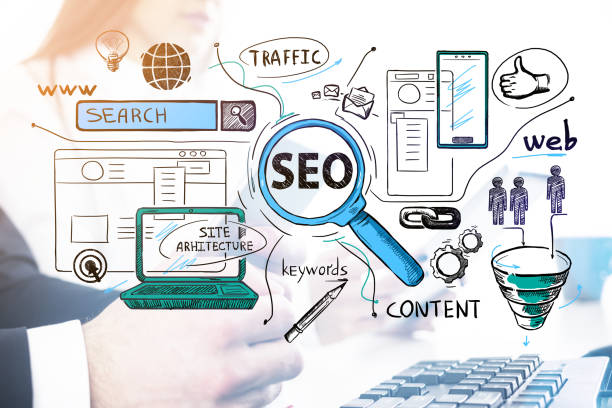
Content is the heart of On-Page SEO.
High-quality, valuable, and relevant content plays a fundamental role in attracting users and improving site ranking in search results.
Your content should answer user questions and needs, providing accurate and useful information.
Before writing content, research what questions users have about the topic and tailor your content accordingly.
Use keywords in your content naturally and relevantly.
Use titles and subtitles to organize content and improve its readability.
Use images, videos, and other multimedia elements to make content more engaging.
Regularly update your content to keep it fresh and relevant.
Use internal and external links to increase content credibility and guide users to other pages on the site.
Your content should be optimized for both search engines and users.
In other words, it must be both understandable for search engines and engaging and useful for users.
Ultimately, On-Page SEO helps you achieve the best results in this field.
Are you tired of losing business opportunities due to not having a professional corporate website?
Rasavob helps you with professional corporate website design to:
✅ Build a powerful and reliable brand image
✅ Convert site visitors into loyal customers
⚡ Get a free consultation now!
Optimizing Images for SEO
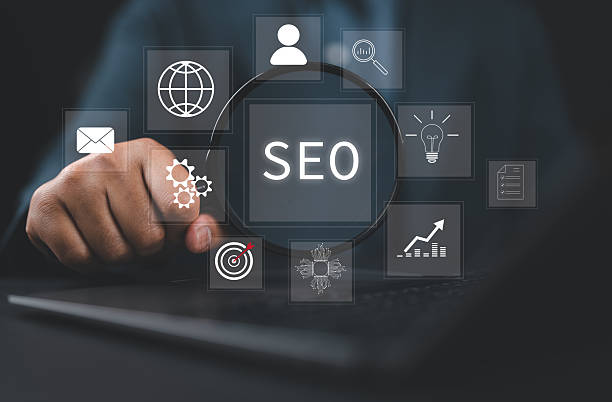
Image optimization is an important aspect of On-Page SEO that is often overlooked.
Images can attract a lot of traffic to your site, but if not optimized correctly, they can negatively impact site speed and ranking.
To optimize images, first use the appropriate format.
JPEG and PNG formats are usually suitable for web images.
JPEG images are suitable for photos and images with many colors, while PNG images are suitable for simple graphics and text.
Next, reduce the file size of images.
Large images can slow down site loading speed and affect user experience.
Use image compression tools to reduce file size without losing quality.
Use the ALT tag for images.
The ALT tag is text that is displayed if the image fails to load.
This tag also helps search engines understand the subject of the image.
Use relevant keywords in the ALT tag, but avoid overdoing it.
Use appropriate file names for images.
The image file name should be relevant to the image’s subject and contain keywords.
For example, instead of using the file name IMG_1234.jpg, use seo-dakheli.jpg.
On-Page SEO in the images section is crucial.
URL Structure and Internal Linking

URL structure and internal linking are two important elements in On-Page SEO that help search engines understand your site’s structure and identify important pages.
URLs should be short, descriptive, and contain keywords.
Avoid using long and complex URLs.
URLs should have a logical structure and reflect the hierarchy of site pages.
For example, a good URL for a product page could be: example.com/category/product-name.
Use internal links to guide users and search engines to other pages on the site.
Internal links should be relevant to the page’s content and point to important pages on the site.
Use appropriate anchor text for internal links.
Anchor text is the text that points to a link.
This text should be relevant to the content of the page it links to and contain keywords.
By using internal linking, you can increase the authority of important pages on your site and improve their ranking in search results.
Internal linking helps search engines find relevant pages on your site and understand the overall site structure.
On-Page SEO in the links section is very important.
Site Speed and Mobile Optimization

Site speed and mobile optimization are two important factors in On-Page SEO that significantly impact user experience and site ranking in search results.
Site speed refers to the time it takes for a web page to load.
Sites with high loading speeds provide a better user experience, and users are more likely to stay on the site and view more pages.
To increase site speed, you can use various methods, such as optimizing images, using a CDN, enabling caching, and using fast hosting.
Mobile optimization means your site is optimized for mobile devices.
Given that most internet users access websites via mobile phones, mobile optimization is very important for On-Page SEO.
Sites that are not optimized for mobile provide a poor user experience, and users are more likely to leave the site.
For mobile optimization, you can use Responsive Design, which allows your site to automatically adapt to different screen sizes of various devices.
| Factor | Description | Solution |
|---|---|---|
| Site Speed | Page loading speed | Image optimization, CDN usage, caching |
| Mobile Optimization | Site compatibility with mobile devices | Responsive design, mobile testing |
Schema Markup and Structured Data
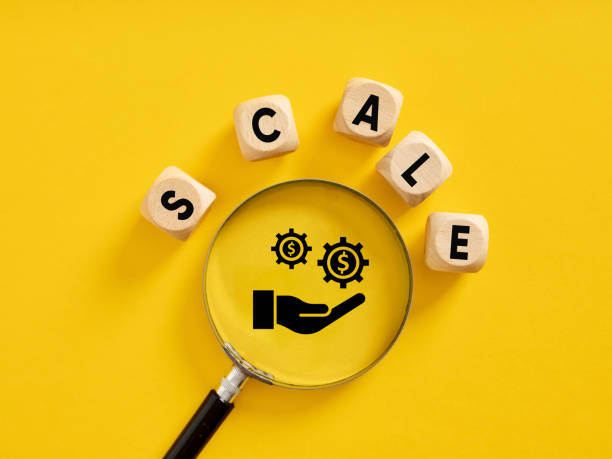
Schema Markup is a markup language that helps search engines better understand your site’s content.
By using Schema Markup, you can provide structured information about your business, products, events, and other items to search engines.
This can lead to the display of Rich Snippets in search results, which can increase your site’s click-through rate (CTR).
Rich Snippets display additional information below the site title in search results, such as star ratings, prices, and availability.
Schema Markup can have a significant impact on On-Page SEO.
By using Schema Markup, you can help search engines better understand your site’s content and present it to relevant users.
Additionally, Schema Markup can help increase your click-through rate and improve your site’s ranking in search results.
To use Schema Markup, you can use various tools, such as Schema Markup Generator.
These tools help you easily generate Schema Markup code and place it on your site’s pages.
Do you dream of a thriving online store but don’t know where to start?
Rasavob is your comprehensive e-commerce website design solution.
✅ Attractive and user-friendly design
✅ Increased sales and revenue⚡ Get a free consultation
User Experience (UX) and SEO

User Experience (UX) refers to the feeling and experience users have when using a website.
A good user experience can lead to increased user satisfaction, longer time spent on the site, and a reduced bounce rate.
Google places great importance on user experience, and sites that provide a good user experience rank better in search results.
To improve your site’s user experience, you can use various methods, such as designing an attractive and easy-to-use interface, providing high-quality and relevant content, improving site speed, and optimizing for mobile.
A website with easy and logical navigation, attractive design, and useful content encourages users to stay on the site longer and view more pages.
This can lead to an increased conversion rate and improved site ranking in search results.
Ultimately, paying attention to user experience is one of the most important aspects of On-Page SEO that should not be overlooked.
Reviewing and Analyzing On-Page SEO Results
![]()
After implementing On-Page SEO actions, it is important to review and analyze the results.
This helps you understand which actions have been effective and which ones need improvement.
To review and analyze On-Page SEO results, you can use various tools, such as Google Search Console and Google Analytics.
Google Search Console provides you with information about how your site performs in search results, such as clicks, impressions, and average keyword ranking.
Google Analytics provides you with information about user behavior on your site, such as time on site, bounce rate, and popular pages.
Using this information, you can identify the strengths and weaknesses of your On-Page SEO strategy and take the necessary steps to improve it.
For example, if you notice that your site’s organic traffic has increased, this indicates that your On-Page SEO actions have been effective.
However, if you notice that your site’s bounce rate is high, this indicates that your site’s user experience needs improvement.
On-Page SEO is an ongoing process and requires continuous review and analysis.
Frequently Asked Questions
| Question | Answer |
|---|---|
| What is a Meta Title and why is it important in On-Page SEO? | The meta title is the most important On-Page SEO element displayed at the top of the browser tab and search results. This title helps search engines and users understand the main topic of the page and should include the main keyword. |
| What role does the Meta Description play in On-Page SEO? | The meta description is a short summary of the page content displayed below the title in search results. Although it does not directly impact ranking, its attractiveness can increase the click-through rate (CTR). |
| How should keywords be used in page content? | Keywords should be used naturally and relevantly in strategic locations such as the title, headings, first paragraph, and body of the text. Avoid excessive keyword stuffing. |
| What is the importance of high-quality and comprehensive content in On-Page SEO? | High-quality, unique, informative, and comprehensive content that addresses user needs is of high importance. Search engines give higher rankings to content that provides real value. |
| What is the application of heading tags (H1-H6) in On-Page SEO structure? | Heading tags (H1, H2, H3, etc.) are used to structure content and indicate the importance of different sections. H1 is the main title of the page, and each page should only have one H1. Other tags are used for subheadings. |
| How to optimize images to improve On-Page SEO? | To optimize images, use descriptive Alt Text that includes relevant keywords, reduce image file size without compromising quality, and use meaningful and relevant file names. |
| What are the characteristics of an SEO-friendly URL? | An SEO-friendly URL should be short, readable, descriptive, include main keywords, and be free of extra characters. The URL structure should be hierarchical and logical to be understandable for both users and search engines. |
| How does Internal Linking help On-Page SEO? | Internal linking, by connecting relevant pages, helps users and search engine crawlers better understand the site structure, transfer page authority, and increase user time on the site. |
| What is the impact of page loading speed on On-Page SEO? | High loading speed is crucial for both user experience and SEO ranking. Slower pages may be overlooked by search engines and lead to an increased bounce rate. |
| Why is Mobile-Friendliness very important in On-Page SEO? | Given the increasing number of searches through mobile devices, having a responsive and mobile-friendly site is essential for user experience and ranking in search results (Google’s mobile-first indexing). |
And other services of Rasavob advertising agency in the field of advertising
- Smart Marketing Automation: A fast and efficient solution for digital branding focusing on SEO-driven content strategy.
- Smart Digital Advertising: Transform campaign management with the help of key page optimization.
- Smart Advertising Campaign: A quick and effective solution for online growth with a focus on intelligent data analysis.
- Smart Data Analysis: Transform click-through rate increase with the help of custom programming.
- Smart Digital Advertising: A new service to increase website traffic through the use of real data.
And more than hundreds of other services in the field of internet advertising, advertising consultation, and organizational solutions
Internet Advertising | Advertising Strategy | Advertorials
Sources
What is On-Page SEO?
On-Page SEO Checklist
Comprehensive Guide to On-Page SEO
Complete On-Page SEO Tutorial
? Are you looking to elevate your business in the digital world? Rasavob Afarin, with expertise in responsive website design, SEO, and content marketing, offers innovative solutions for your online growth and prominence.
📍 Tehran, Mirdamad Street, next to Bank Markazi, Kazerun Jonoubi Alley, Ramin Alley, No. 6



